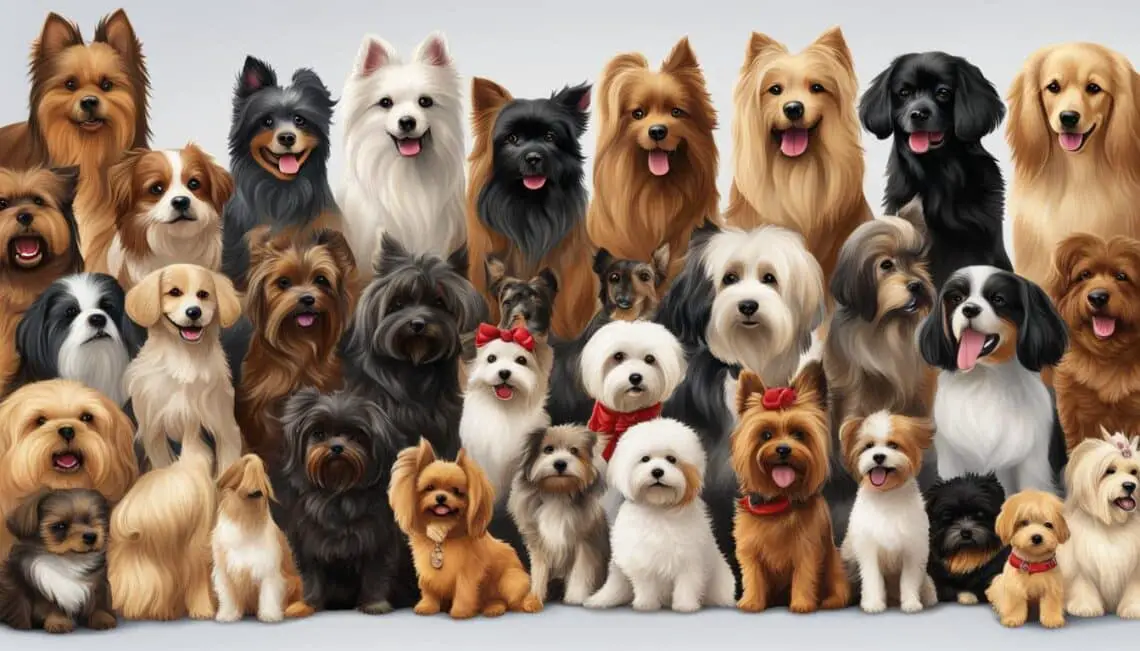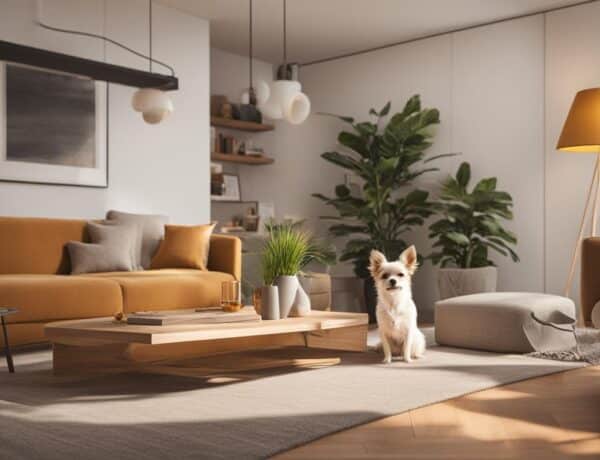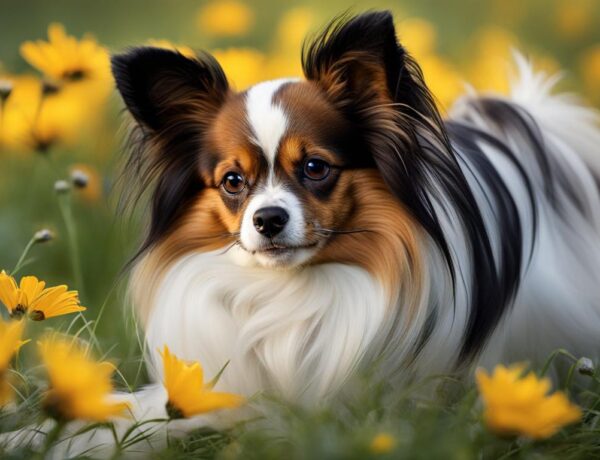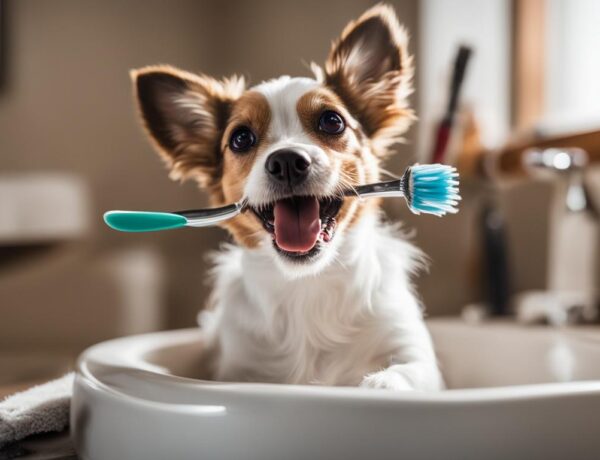Toy dog breeds are small and adorable companions that make perfect pets for any home. They are known for their affectionate nature and strong bond with their owners. Toy dogs are well-suited for smaller properties and can thrive in both rural and urban environments. In this comprehensive guide, we will explore the various aspects of toy dog breeds, including feeding, bonding, and popular toy dog breeds to consider.
Key Takeaways:
- Toy dog breeds are small and affectionate companions.
- They are well-suited for smaller properties and can thrive in various environments.
- We will explore feeding, bonding, and popular toy dog breeds in this guide.
- Consider your lifestyle and preferences when choosing a toy dog breed.
- To ensure compatibility, research the specific needs of each breed.
Feeding Toy Dogs: Tips and Tricks for Picky Eaters
Feeding toy dogs can sometimes be a challenge, as they are known for their selective eating habits. As a responsible owner, it’s important to find creative ways to entice your furry friend to eat. One technique that often works well is scattering their food outdoors or hiding it in different locations. This not only stimulates their natural hunting instincts but also makes mealtime more exciting for them.
Another effective strategy is to occasionally hand-feed your toy dog. This not only helps to build a stronger bond between you and your pet but also allows you to closely monitor their eating habits. Hand-feeding can also be useful during training sessions, as you can use small pieces of food as rewards for good behavior.
While it’s important to cater to your toy dog’s preferences, it’s equally crucial to ensure they receive proper nutrition. Be sure to follow the recommended feeding guidelines provided by your veterinarian and choose high-quality dog food that meets their specific needs. It’s also important to establish a feeding routine and avoid overfeeding, as toy dogs are prone to obesity.
To further enhance your bond with your toy dog, it’s essential to spend quality time together. Take them on outings, socialize them with other dogs, and teach them to enjoy their own company. This will not only contribute to their overall happiness and well-being but also help alleviate any anxiety or separation issues they may have.
| Feeding Tips for Toy Dogs | Tricks for Picky Eaters |
|---|---|
| Scatter food outdoors or hide it in different locations to stimulate hunting instincts. | Occasionally hand-feed your toy dog to build a stronger bond and monitor eating habits. |
| Follow recommended feeding guidelines and choose high-quality dog food for proper nutrition. | Establish a feeding routine to avoid overfeeding and obesity. |
| Spend quality time with your toy dog, take them on outings, and socialize them with other dogs. | Teach your toy dog to enjoy their own company and alleviate separation anxiety. |
“Feeding toy dogs requires creativity and patience. Understanding their preferences and finding innovative ways to make mealtime enjoyable is key. Remember to maintain a healthy feeding routine and prioritize their nutritional needs. By spending quality time together, you’ll strengthen your bond and ensure a happy, well-fed toy dog.” – Dr. Emily Johnson, Veterinarian
Popular Toy Dog Breeds: Characteristics and Traits
When it comes to choosing a toy dog breed, there are plenty of options to consider. Each toy dog breed has its own unique characteristics and traits that make them special in their own way. Whether you’re looking for a small, playful companion or a calm lap dog, there’s a toy breed out there for you.
Let’s take a look at some of the most popular toy dog breeds:
Chihuahua
The Chihuahua is one of the most well-known toy dog breeds. They are tiny in size but big in personality. Known for their loyalty and devotion to their owners, Chihuahuas make excellent companions. They are also highly adaptable and can thrive in both apartments and larger homes.
Maltese
The Maltese is a toy breed known for its luxurious white coat and friendly demeanor. They are gentle, affectionate, and enjoy being the center of attention. Maltese dogs are great for families and individuals alike, and they are also hypoallergenic, making them a popular choice for those with allergies.
Havanese
The Havanese is a toy breed that is known for its lively personality and affectionate nature. They love to be around people and are excellent with children. The Havanese is a versatile breed that can adapt to different environments and lifestyles, whether it’s a bustling city or a quiet suburban neighborhood.
These are just a few examples of popular toy dog breeds, but there are many more to choose from. When selecting a toy breed, it’s important to consider factors such as size, temperament, exercise needs, and grooming requirements. By doing your research and finding the breed that aligns with your lifestyle, you can ensure a long and happy companionship with your pint-sized furry friend.
Conclusion: Embracing the Delightful World of Toy Dog Breeds
Toy dogs, whether small or tiny, bring immense joy to our lives. Their endearing size, affectionate nature, and cute appearance make them cherished companions for dog lovers. Throughout this comprehensive guide, we have delved into various aspects of toy dog breeds, including feeding tips, bonding techniques, and popular breeds to consider.
When it comes to feeding toy dogs, it’s essential to be creative and attentive to their picky eating habits. Scatter their food outdoors or hide it in different locations to stimulate their hunting instincts. Don’t forget to maintain a close bond by occasionally hand-feeding and using food as a reward during training. Remember, a well-fed and bonded toy dog is a happy toy dog.
Choosing the right toy dog breed is a personal and important decision. With a myriad of options available, it’s crucial to consider their size, temperament, and grooming needs. Researching and understanding the specific requirements of each breed will ensure a harmonious match with your lifestyle. Whether you opt for an Affenpinscher, Chihuahua, or any other toy breed, the choice is yours.
So, if you’re ready to welcome a delightful pint-sized paw pal into your home, embracing the world of toy dog breeds is the way to go. These tiny bundles of joy will fill your days with love, laughter, and a special kind of companionship. Get ready to embark on this wonderful journey with your new small toy dog by your side. Start exploring and find your perfect match today!
FAQ
Are toy dog breeds good for small properties?
Yes, toy dog breeds are well-suited for smaller properties and can thrive in both rural and urban environments.
How can I handle a toy dog’s picky eating habits?
It’s important to be creative and inventive when feeding toy dogs. Scattering their food outdoors or hiding it in various locations can help stimulate their hunting instincts. Hand-feeding and using food as a reward during training can also be effective. However, it’s important to follow daily feeding guidelines to ensure they receive all necessary nutrients.
How can I bond with my toy dog?
Spending quality time together and taking them on outings can contribute to bonding with your toy dog. Teaching them to enjoy their own company is also beneficial.
What are some popular toy dog breeds to consider?
Some popular toy dog breeds include the Affenpinscher, Biewer Terrier, Brussels Griffon, Chihuahua, Chinese Crested, English Toy Spaniel, Havanese, Italian Greyhound, Japanese Chin, Maltese, and Manchester Terrier (Toy), among others.
How do toy dog breeds differ in size, temperament, and grooming needs?
Each toy dog breed has its own unique characteristics. Size, temperament, and grooming needs vary, so it’s important to consider your lifestyle and preferences when choosing a breed. Thorough research is essential to ensure a compatible match.
Why are toy dog breeds cherished by dog lovers?
Toy dog breeds are cherished for their small size, affectionate nature, and adorable appearance. They make wonderful companions and can bring joy and companionship to any home.





No Comments